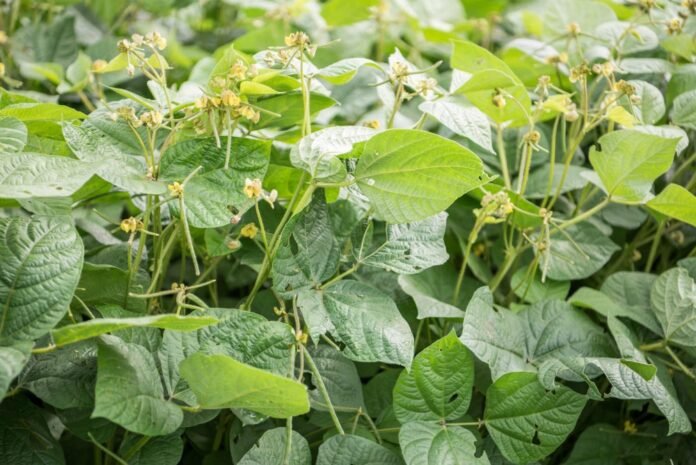In today’s era, the farmer is cultivating various crops for profit in less time and cost every season. Moong farming is also one such profitable agriculture. It can be grown easily in all types of climates. Moreover, Moong is cultivated in India in all three seasons Kharif, Rabi and Zaid. Moong is a major crop in pulses, and its botanical name is Vigna Radiata. It is a plant of the Leguminosae family, and its birthplace in India. Also, Moong occupies an important place among the pulse crops grown in India. It also increases soil fertility due to the amount of nitrogen present in its root. Therefore, planting pulse crops like Moong increases the amount of nitrogen in the field, which gives better protection than other crops. Moreover, it works as green manure in the field. Due to this, the fertility of the soil increases.
Nutritional Value Of Moong
Moong has an important place in pulse crops. It is a very important crop in terms of nutrients. Along with proteins, fibres and iron elements are abundant in it. This includes 25 percent protein, 60 percent carbohydrate, 13 percent fat (fat), and small amounts of vitamin C. Therefore, using moong dal fulfils the deficiency of essential nutrients for the body. Moreover, sprouted Moong doubles the amount of nutrients like calcium, iron, protein, carbohydrates and vitamins.
Moong Farming Essential Steps
Suitable Climate For Moong Farming
Moong is an early maturing and high-temperature tolerant crop. It can be cultivated successfully in all three seasons, Kharif, Rabi and Zaid. Moong cultivation is suitable in areas with 60 to 75 cm annual rainfall. Moong can be sown till the end of July. A temperature of 25 to 35 degrees is ideal for Moong farming. It can easily tolerate even higher temperatures. For its cultivation, loam, sandy soil with proper drainage, whose pH value is 7 to 8, is best for its cultivation. Excess rain is harmful to moong crops.
Land Preparation For Moong
For high yield with good quality from moong cultivation, first, we should carefully prepare the field for sowing. For this, before sowing, we should do the first ploughing of the area with a powerful Mahindra tractor. After this, to protect the crop from termites, the field should be well pulverised by applying 2-3 ploughings and 1.5 percent of Quinalphos powder at 25 kg per acre. Finally, we should level the field using a leveller in the last ploughing.
Seed Quantity And Treatment
It is important to consider seed quantity and treatment before sowing for a higher yield. And we should plant healthy and good-quality advanced seeds. The amount of seed required for moong cultivation is 15 to 25 kg per hectare. For the Zaid season, the quantity of seed should be 20-25 kg per acre. To treat the seeds, use thiram fungicide at 3 grams per kg of seeds. And 2.5 grams of Carbendazim 600 grams of rhizobium culture with 250 grams of jaggery in one litre of water should be heated, and after cooling, the seeds should be treated and dried in the shade and sown.
Sowing Method
Sowing of Moong is more suitable in the row method with the help of a seed drill. This is because the distance from the plant to the plant is the same. And germination is also good. With a seed drill, seeds should be sown at 3-5 cm depth, keeping the distance between rows 30 to 35 cm. In contrast, keep a space of 5 to 7 cm for sowing plants. Note that the field of Moong should be 3 metres away from the area of any other species.
Irrigation In Moong Farming
Moong crops do not require much fertilizer and irrigation. But in the dry season, 4 to 5 times irrigation is necessary on light land and 2 to 3 times on heavy land. We can also use a drip irrigation system in Moong Farming. We should take special care to ensure sufficient moisture in the soil during the formation of branches and at the time of seed filling.
Weed Control
After the first irrigation in the moong crop, remove weeds by manual or hand weeding. Second weeding can be done as per the requirement of the crop. Apart from this, spray pendimethalin 3.30 litres in 500 litres of water in one hectare after one or two days of sowing. At the same time, making a solution in water at the rate of 750 ml per hectare can also be sprayed with Imangethipper. Also, we can use an efficient New Holland tractor for effective weed control in Moong Farming.
Moong Farming Disease Management
Powdery mildew, Macrophomina blight, Cercospora leaf spot and anthracnose are the major fungal diseases in Moong Farming. To prevent these diseases, sprinkle 500 grams of Carbendazim drug dissolved in 500 litres of water on the crop after 30 days of sowing. We can repeat spraying after 15 days as per requirement.
Apart from this, for the control of white fly, spray 150 ml of imidacloprid or 400 ml of Dimethoate mixed with 400 litres of water per hectare and repeat the spraying in 12-15 days.
Flea beetle, pod borer and leaf curler are the major insect pests in moong farming. Prevent it by spraying 1 litre of Profenofos or 500 ml of Chlorantraniliprole, or 125 grams of Spinosad twice per hectare.
If we adopt Moong farming with the right technology and method, we can achieve a yield of 10-15 quintals per hectare. Thus, we can earn good profits from its cultivation.
Stay connected with us for more details about such leguminous crops.





